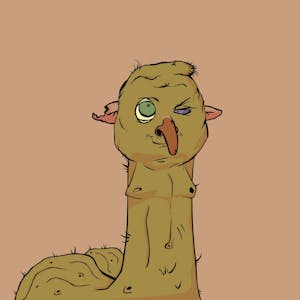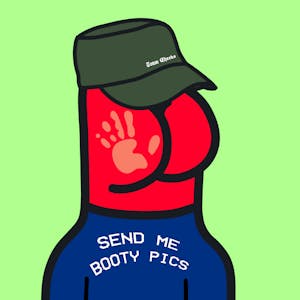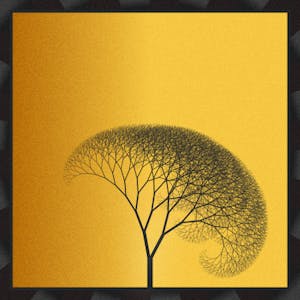Pablo Rodriguez-Fraile
A major NFT collector shares his passion for digital art and his reasons for founding the marketplace Aorist.

In the heady days of 2021 and early 2022, entrepreneurs pumped out hundreds of NFT collections in hopes of cashing in quick. Many of these blatantly ripped off existing, successful collections, riffing on their imagery, or at least using the same strategies of animal mascots and toilet humor. When the market crashed, these tokens were abandoned by their creators, leaving hopeful investors with no utility or community. What’s the future of all this digital garbage? Skyler Hallgren, Zach Miller, and David Sawyer co-founded the Unsellable collection to answer this question. They buy unwanted NFTs for a penny each, which gives investors an incentive to sell—the transaction enables them to claim a loss on their tax returns. But rather than leaving these acquisitions in a junkyard, Unsellable’s founders plan to position them as relics of an important moment in the early history of NFTs. Outland spoke to Hallgren about the genesis of Unsellable, and plans to exhibit the collection.
I am by nature drawn to analog, physical materials, so it took a nudge to get interested in NFTs. I started Unsellable with two other founders—one of whom, Zach Miller, is my longtime business partner. In 2021 he got into NFTs as investments. He told me about some projects he thought could be successful. I didn’t really care for anything he put on my radar and was pretty skeptical about the hype. Many projects were obviously derivative of others that had been able to build momentum.

One of the projects he bought into, VeeFriends, did really well. It was created by Gary Vaynerchuk, who has a huge following. But the others were becoming totally worthless and literally illiquid. The idea for Unsellable came about because Zach found himself in the position of a speculator taking losses on projects that had been abandoned by their creators. It added insult to injury: he lost money and couldn’t take a write-off because no one was willing to buy them, even for virtually nothing. Unsellable was a solution to the problem. As a side benefit, it has drawn me into the space and helped me get past my initial skepticism, because it has introduced me to projects that truly are compelling from an artistic perspective.
We now hold more than 17,400 NFTs. Some of the stuff in the collection is really egregious. I wouldn’t show it to my mother—monkeys in self-fellatio poses and stuff like that. There are a few derivatives of the Goblintown collection that take an already-questionable aesthetic and make it more obscene. If you gave a thirteen-year-old boy unlimited resources to create whatever he wants—that’s a portion of the kind of stuff we’ve ended up with.

I see this collection as an artifact of a moment in the history of both digital art and economics. The NFT market boom of 2021 is an example of a bubble that we’ll look back on as infamous, like the Dutch tulip craze of the 1600s. We want to create a lasting record of this phenomenon. Some of the pieces belong to collections that attained very high sales at one point, then totally dropped off—like the Lonely Frog Lambo Club and Army of the Dead. Our goal is to curate the collection by highlighting the more interesting pieces, while also acknowledging the opportunism and greed that shaped the space in its early days. NFTs are a technology with great potential for real artists, but much of what was produced in the space had nothing to do with art.
That said, I’ve had my perspective changed on NFTs. Even as our collection serves as a type of Goodwill for digital art, the number of pieces we’ve collected with real value (both financial and artistic) has really impressed me. It’s motivated me to see art in a new way, and to look at pieces I’d like to collect personally. We’ve been putting together a Hall of Fame, for the pieces that actually are innovative and visually compelling. There are tokens from The Panels (2021), a really elegant collection of generative art that just didn’t find a collector base, and Splat (2022), a project that let people “splash” other NFTs with tomato soup, inspired by the climate activism at museums last fall (proceeds from that collection’s sales were donated to climate organizations). There’s also a Hall of Shame, with the most shocking or inappropriate images that we hold.

We are actively searching for digital artists and those interested in working with us to showcase the collection. We’re exploring various virtual gallery spaces for both the Hall of Fame and the Hall of Shame, and we’d like to claw some of it out of the digital, doing a presentation at a brick-and-mortar gallery space. Our goal is to create an experience that people can visit and appreciate, like a museum. We’re entrepreneurs, not artists, but we’re open to finding the right collaborator to do something cool and make a statement.
These days the NFT market is being refined, and the trash is being swept out to make space for the maturation and evolution. We’re the garbage collectors of the NFT world—picking up these projects that people don’t want in their wallets anymore, and hopefully freeing up some capital for them, which they can put back into web3 projects that have some potential. I hope we’re creating more clarity around where the utility is, where the art is, and giving more attention to those who truly care about making something of true value.
—as told to Brian Droitcour
